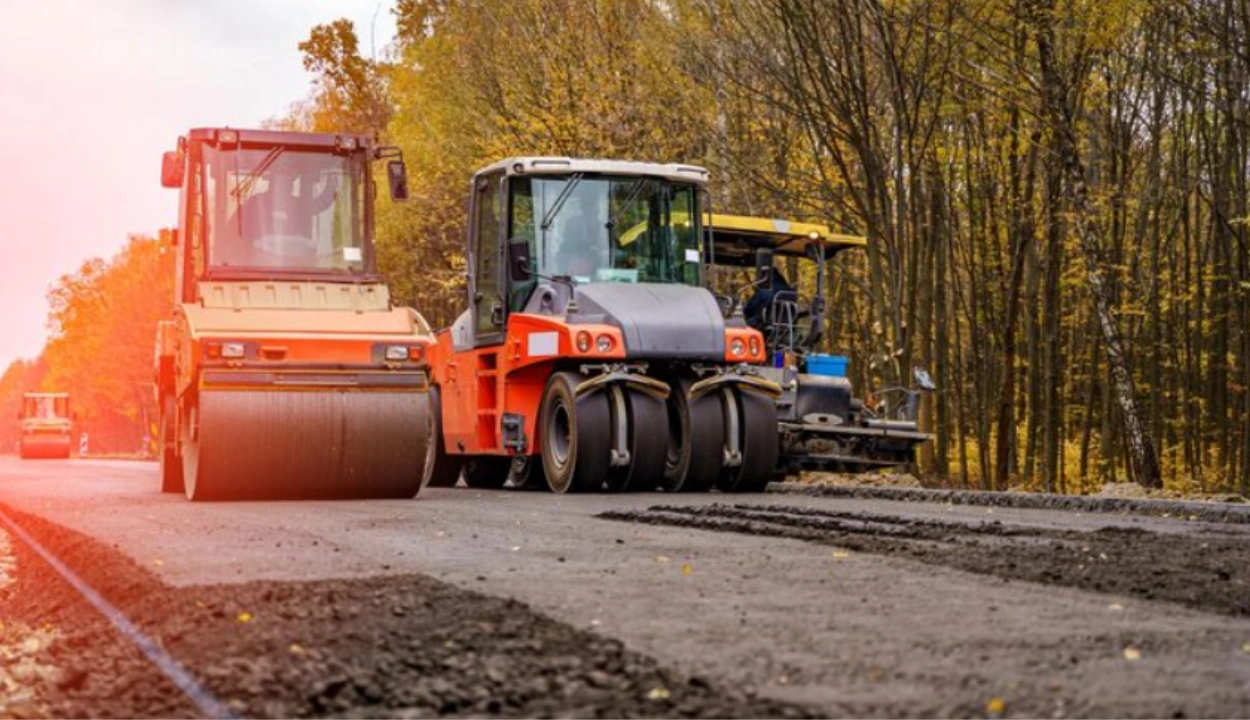What is DOT Compliant & How to be DOT Compliant?
DOT compliance is the first step in avoiding unnecessary conflict with legal authorities.
It's essential for all transportation companies, particularly those in the construction sector where large vehicles are common.
Compliance not only safeguards against legal issues but also promotes safety on the road.
What is DOT Compliance?
DOT compliance involves adhering to Department of Transportation rules to ensure vehicle safety and operational standards that cover various areas such as:
- Avoiding drugs and alcohol
- Following inspection and maintenance requirements
- Ensuring driver qualifications
- Complying with hazardous material regulations
- Meeting general safety requirements
So, why does DOT compliance hold such great significance? Here are the benefits that DOT compliance offers to businesses:
- Security: Prevents accidents and injuries while protecting workers and the public.
- Legal Implications: Non-compliance can result in fines, penalties, and potential business shutdowns due to financial and reputational damage.
- Functional Effectiveness: Proper support and skilled staff reduce breakdowns and improve operations.
- Reputation and Trust: Compliance builds a reliable and safe reputation which strengthens client and partner relationships.
- Regulatory Monitoring: Ongoing supervision helps businesses maintain high standards and stay compliant.
A DOT compliant application helps businesses manage these rules and stay on top of safety and operational standards.
Who Needs to Comply with DOT Regulations?
Here's a quick guide on who needs to comply with DOT regulations.
Commercial Motor Vehicles (CMVs)
Approximately 8.7 million CMV drivers are operating in the USA alone.
Vehicles carrying hazardous materials weighing over 10,000 pounds or having a capacity exceeding 15 persons, including the driver, must stick to the DOT's regulations for business travel, whether interstate or intrastate.
Specific Industries:
- Freight and Hauling: Must follow maintenance, safety, and driver-hour regulations.
- Passenger Transport: Includes safety, qualification, and operational standards for buses.
- Hazardous Materials: Requires strict packaging, labeling, and handling rules.
Clarifications on Exemptions and Special Cases
Entities may apply for exemptions through the FMCSA if regulations hinder efficiency while maintaining safety.
This process includes a public comment period to ensure that safety standards are upheld.
Exemptions typically last up to five years and are renewable.
Details are published in the Federal Register and can be tailored to specific industries, such as agriculture or new technologies, provided they meet safety standards.
Note: In 2021, there were 130,076 active hazardous materials. To manage and track them effectively, use comprehensive construction equipment management software like Clue, which offers real-time tracking, regular audits, and compliance checks for proper handling and storage.
How to Be DOT Compliant: Key Requirements
Now the question is, how do you become DOT compliant?
Below are some basic DOT compliance requirements:
Managing Driving Hours
HOS rules limit driving hours to avoid exhaustion. After eight hours of driving, a 30-minute break is required, and drivers must follow daily and weekly limits.
An Electronic Logging Device (ELD), which is now mandatory and FMCSA-approved, monitors driving time.
Regular Vehicle Checks and Maintenance
This includes pre-trip inspections to check for damage and safety issues, as well as post-trip inspections to report maintenance needs.
Regular preventive maintenance reduces wear and extends vehicle lifespan.
Digital tools ease compliance processes, with Clue, an equipment management software, being a prime example.
This software unifies inspection and maintenance data into a single platform, simplifying vehicle tracking and upkeep.
Additionally, equip your fleet with a DOT-compliant safety kit to meet regulations and enhance overall safety.
Ensuring Driver Eligibility
Employers must conduct thorough background checks, including motor vehicle records, safety history, substance abuse records, and pre-employment drug tests, to remain DOT compliant.
Regular assessments are essential to ensure drivers meet safety requirements.
Substance Abuse Screening
To ensure that drivers are always physically fit, random drug tests, including alcohol testing, should be conducted regularly.
Testing should cover substances such as marijuana, cocaine, opioids, and others, and should occur randomly or soon after incidents.
Securing Cargo Properly
Cargo must be secured with straps and locks to prevent shifting during transport, which helps avoid accidents caused by moving cargo.
Ensure the cargo does not block the driver’s view and follow DOT guidelines for properly fastening cargo.
Accurate Record Keeping
Maintaining accurate records is crucial for DOT compliance.
Required documents include proof of insurance, vehicle inspections, driver qualifications, and more.
Keeping these records digitally can enhance efficiency and ensure compliance.
Clue can greatly assist by centralizing all records in one place.
It integrates with systems like ERP and API to offer a user-friendly interface for easy access and management.
Required Licenses and Permits
DOT compliance requires specific licenses and permits, such as USDOT and MC numbers, commercial driver's licenses (CDLs), and motor carrier authority numbers.
These ensure legal operation and regulatory adherence that keeps your operations DOT compliant.

Source: Get App
Consequences of Non-Compliance
Fines and Penalties
Non-compliance with DOT regulations can result in substantial financial penalties:
- Minor Violations: Fines can amount to several hundred dollars
- Non-Recordkeeping Violations: Cost $14,502
- Alcohol Prohibition Violations: Can reach $5,970 for a second offense
- Out-of-Service Order Violations: Can incur fines of $22,587
- Serious Infractions: Violations, especially those involving hazardous materials, can exceed $175,000
Loss of Operating Authority
Non-compliance can lead to losing your right to operate.
The FMCSA can withdraw, change, or suspend your operating authority for serious, repeated, or severe violations.
This means the company cannot legally operate its vehicles, which can cause immediate shutdowns and significant financial losses.
Increased Accident Risk
Violations of DOT regulations significantly increase the risk of accidents.
These incidents can escalate costs due to claims, legal fees, and insurance premiums; in some cases, they can lead to severe injuries or fatalities.
Note: In 2011, the fatality rate for large trucks and buses was 0.136 per 100 million miles driven compared to 1.10 for all vehicles; injury rates were 3.80 per 100 million miles versus 75.3 for all vehicles.
Adherence to DOT regulations, including the use of a DOT-compliant truck safety kit, is critical to minimizing these risks and associated costs.
Steps to Ensure DOT Compliance
Promote Safety at Work
Ensure workplace safety to comply with relevant DOT regulations.
To develop a safety-first culture, start by incorporating safety measures into all your activities.
For example, establish safety guidelines for operating heavy machinery and strictly enforce hazardous material handling procedures.
Additionally, hold monthly safety review meetings for employees to discuss incidents, near-misses, and safety improvements.
Use Digital Tools
Digital software, such as Clue, a fleet management system, simplifies DOT compliance by automating record-keeping and monitoring.
These systems track vehicle schedules, driver hours, and regulatory compliance in real time.
ELDs further ensure accuracy by automatically recording driving hours, reducing human error, and keeping logs up-to-date.
Train Employees Regularly
Regular instruction on DOT regulations and laws is essential for keeping workers informed.
Periodic meetings are recommended to review rule changes, safety protocols, and best practices.
For example, a construction company can hold quarterly training sessions with practical demonstrations and interactive Q&As to ensure employees understand and apply the latest standards.
Keep Detailed Records
Detailed records are crucial for DOT compliance during audits.
This involves documenting all related activities, such as vehicle inspections and driver training.
Record each vehicle inspection with the date, time, and details of any issues resolved.
Detailed reports help pass DOT inspections and provide insights for performance tracking and improvements.

Source: 360 Factors
Conclusion
Understanding and following DOT compliance rules is crucial for safety, legal requirements, and smooth operations in transportation and construction.
Focus on safety by using digital tools like Clue. Its tracker management system helps keep track of records, provides regular employee training, and keeps detailed records.
Taking these proactive steps helps avoid fines and improves your business's performance and reliability.
FAQs
What is DOT Compliance?
DOT Compliance involves adhering to the Department of Transportation's guidelines on drug and alcohol use, vehicle maintenance, driver qualifications, and handling materials.
Who Needs to Comply with DOT Regulations?
Businesses operating motor vehicles, private fleets, and industries such as freight, passenger services, and hazardous materials must adhere to DOT standards. Maintenance software aids compliance by automating record-keeping, tracking vehicle maintenance, and monitoring driver hours, which ensures accuracy and timeliness.
What Are the Consequences of Not Being DOT Compliant?
Non-compliance can result in fines, penalties, loss of operating privileges, and increased accident risk, which can damage your business's reputation and finances.
How Can Digital Tools Help with DOT Compliance?
Digital tools like Clue equip businesses with the necessary resources to streamline compliance processes.
Transform Your Equipment Management















